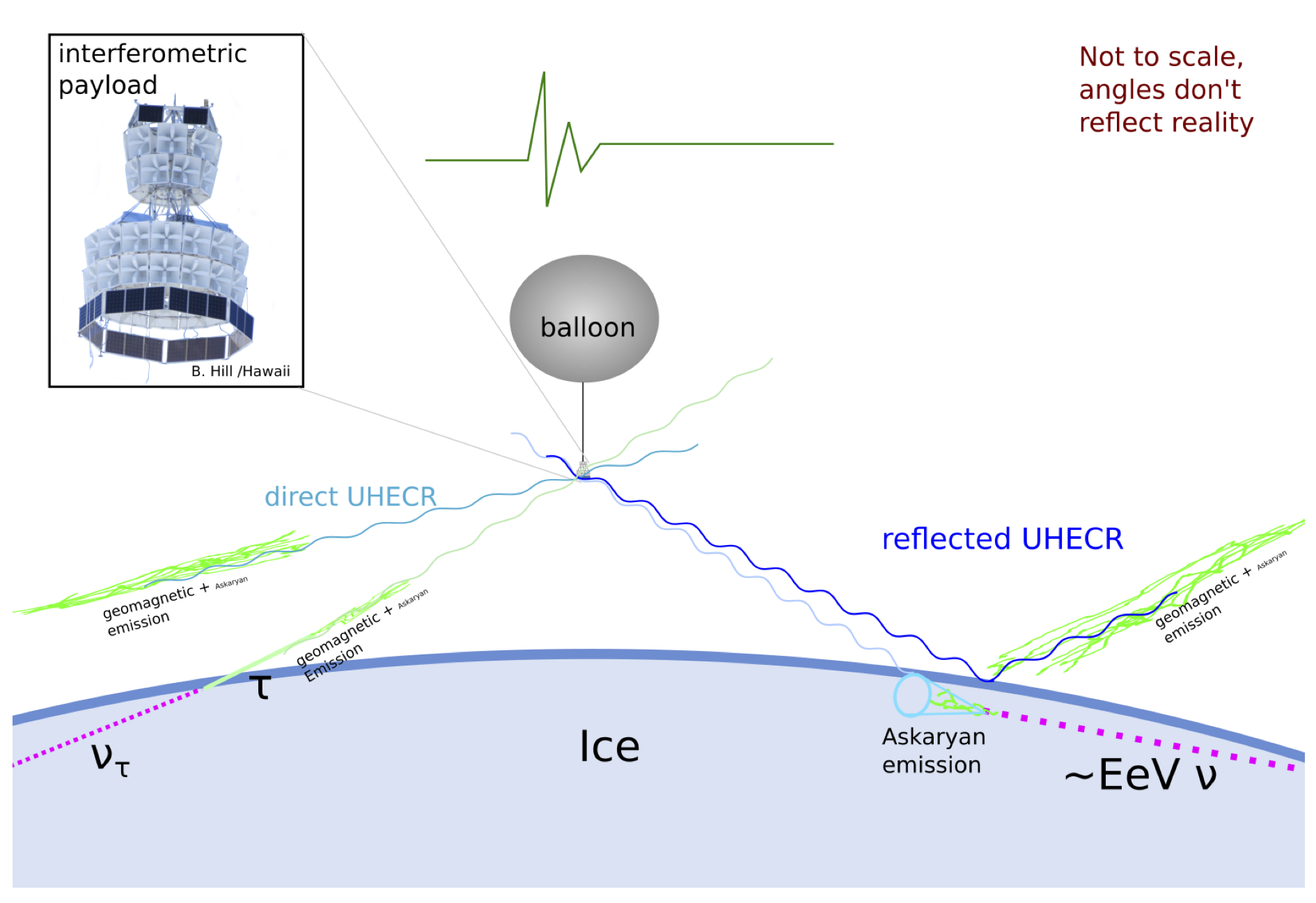ANITA
ANITA is a balloon-borne experment that attemmpts to turn an entire continent, Antarctica, into a gigantic neutrino telescope. From its vantage point, dangling from a NASA long-duration balloon over 35km above the ice, ANITA surveys over one million cubic kilometres of ice. The experiment is searching for the charactersitc radio chirps which would indicate a neutirno interacting in the ice below.
In addition to in-ice neutrino interactions the experiment is sensitive to the interactions of ultra-high energy cosmic rays (UHECR) in the Earth's atmosphere. The experiment may also be sensitive to tau neutrino emerging from the ice. These signals are illustrated in the cartoon below.

How Does Anita Detect Neutrinos
The ANITA instrument consists of an array of sensitive radio antennas. When ultra-high energy particles (neutrinos or cosmic rays) interact in the ice or the atmosphere the produce a shower of secondary particles. These secondary particles produce coherent radio pulses either through the Askaryan effect or through the separation of charges in the Earth's magenetic field. Both of these mechanisms are a coherent effect, in which the observed signal is the result of many millions of particles in the shower emitting radio signals which constructively interfere in certain directions.
ANITA has completed four flights, with the most recent being in December 2016.
